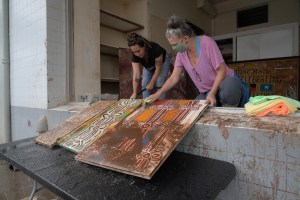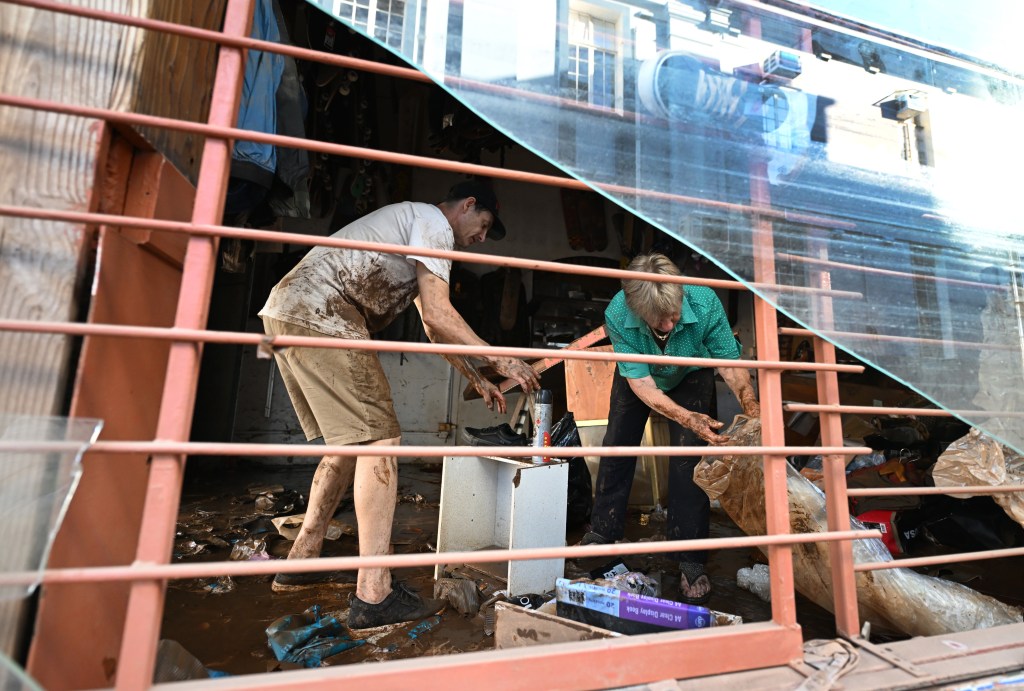After one-in-100-year flood waters rose close to 15 metres in parts of Lismore during the early hours of Monday, March 1, a local network of pharmacists took it upon themselves to try and meet the demands of what had quickly become a regional pharmaceutical shortage.
Now, they’re joined by doctors around the country in calling on the Albanese government to formulate a disaster plan before the worst of another La Nina weather system tears through the region again.
Videos by VICE
On Friday, the Pharmaceutical Society of Australia (PSA) and the Australian Medical Association(AMA) led the calls alongside members of the Natural Disaster and Emergency General Practice and Primary Health Partnership Group.
Speaking from Lismore, PSA NSW president, Chelsea Felkai, said introducing the NSW Rural Doctors Network’s Healthcare Flood Recovery Grant Proposal would allow pharmacists and healthcare workers to stick to what they do best.
“We’ve seen pharmacists on the back of jetskis trying to get medicines to people who need them, that’s how dedicated they are,” Felkai said.
“Many of these pharmacists have lost hundreds of thousands of dollars’ worth of stock, and some have lost their pharmacies altogether. We cannot support the health of our communities if the government doesn’t support us,” she said.
The coalition of health groups is broadly calling for more funding and a stopgap measure for emergency supply arrangements. It would mean patients can easily access their medications during and following a disaster, like the flooding that tore through Lismore earlier this year, even if their scripts and other documents have been destroyed.
As it stands, temporary emergency supply arrangements, which were introduced during the 2019-20 Black Summer bushfires, can only be offered to patients who have evidence they’re in immediate need of medicine and can prove a prescription record.
But that measure will expire at the end of September, as Australia heads into its third consecutive La Niña weather event.
The Bureau of Meteorology made the declaration on Tuesday, joining weather agencies around the world in saying that the weather pattern was underway in the Pacific and that the nation’s eastern states would face elevated flood risks as a result.
“Models indicate this La Niña event may peak during the spring and return to neutral conditions early in 2023,” the bureau said.
During the weather system’s most recent cycle earlier this year, Australia’s eastern states faced historic flooding that displaced thousands of people, exacerbated a decades-long housing crisis, and left several communities without state or federal government support.
Early flooding warnings in Queensland and Tasmania, and actual flooding in parts of NSW on Friday, offered calls for disaster health planning a renewed sense of urgency, just days after the city of Brisbane started handing out sandbags in preparation for what might be ahead there.
“The Commonwealth continued dispensing arrangements are not fit for emergency purposes,” Felkai said.
“Many of the medicines where there is an absolute imperative to continue therapy have been left off this arrangement—things like anticoagulants, antidepressants, epilepsy medicines. In a disaster situation, it is the patients on these sorts of medicines who will suffer.”
It was these patients who suffered in March this year, long after flood waters had receded.
Caitlin McMahon, a Lismore-based pharmacist, told VICE in March that she was headed to the nearby town of Goonellabah, about 5 kilometres east of Lismore, to work an emergency shift at the town’s local pharmacy when floodwaters started to roll through the region.
There, she said, there was still enough stock to meet a maelstrom of empty scripts that needed to be filled early in the week.
Eventually, stock would run out.
“Without the internet, it was impossible to order more. The stock that we had ordered couldn’t get in [to town] because the floodwaters were still so high, and we had started to take on all of Lismore’s methadone patients and I had no methadone,” McMahon said.
“And these are people that need their dose, you know? A lot of people were very, very angry.”
Scores of communities dotted across the region still don’t have cars, money, or their homes. McMahon said she doesn’t hold much hope for next time, either.
“Just in terms of healthcare, I’m scared about [what happens] if this frequency increases, and these climate disasters increase. We’re still opening coal plants, we’re still encouraging them to operate, and we’re not transitioning,” she said.
“What’s the plan for the future?”
Dr Fei Sim, national president of the PSA, said on Friday that making continued dispensing arrangements permanent for all medicines would be a good start.
“We cannot wait for natural disasters to happen before we put measures in place to protect the health and wellbeing of our communities,” Dr Sim said.
Follow John on Twitter.
Read more from VICE Australia and subscribe to our weekly newsletter, This Week Online.






